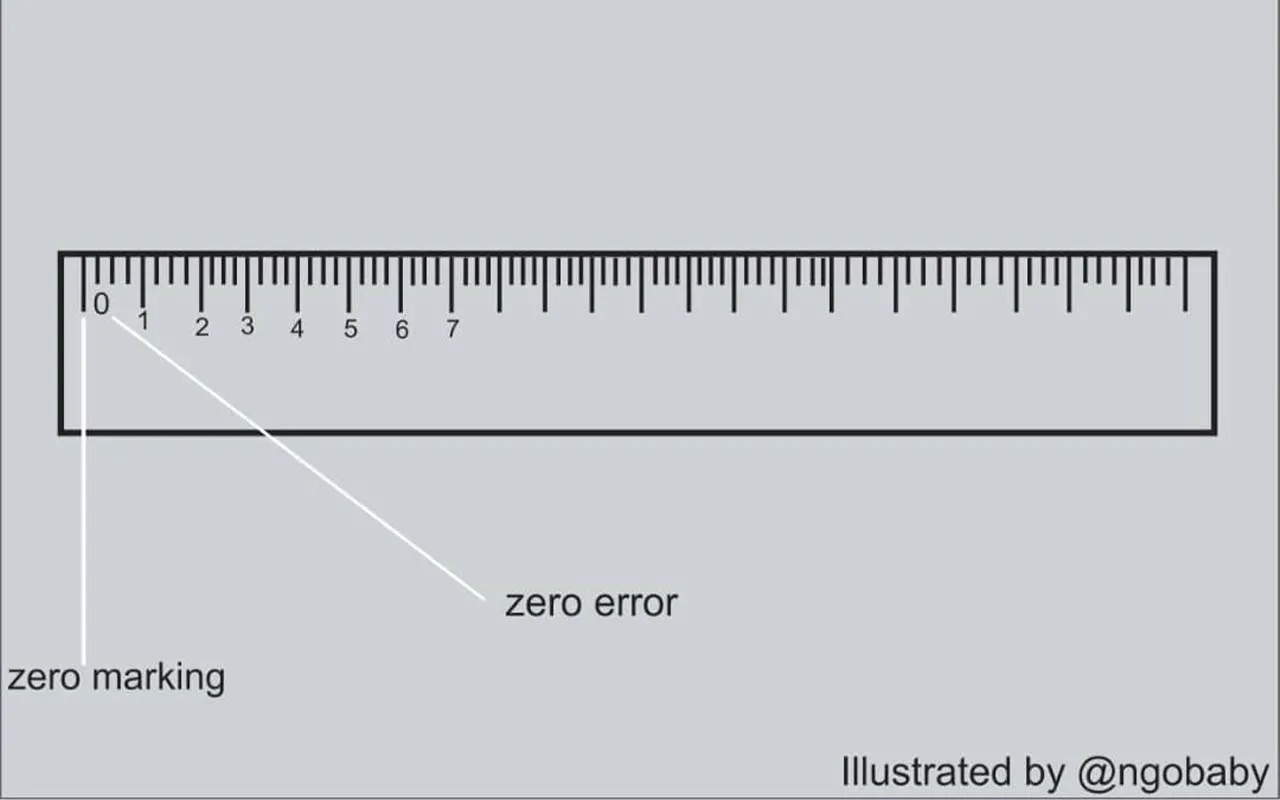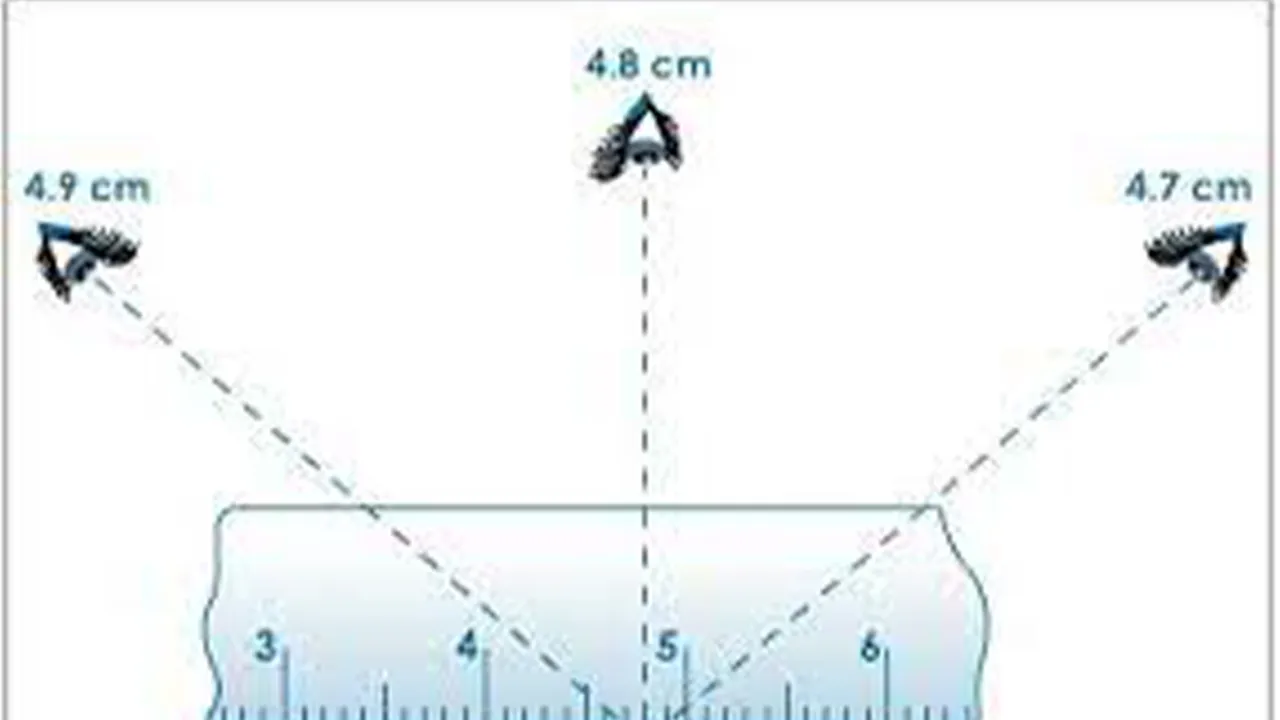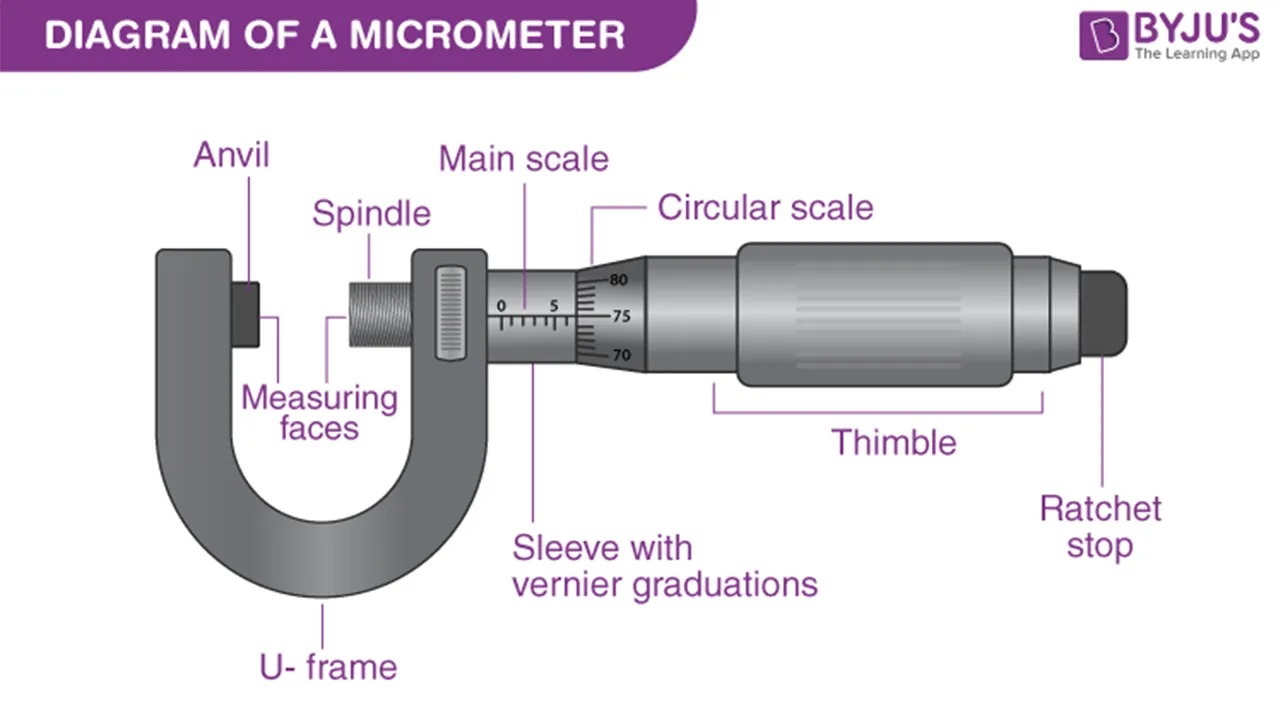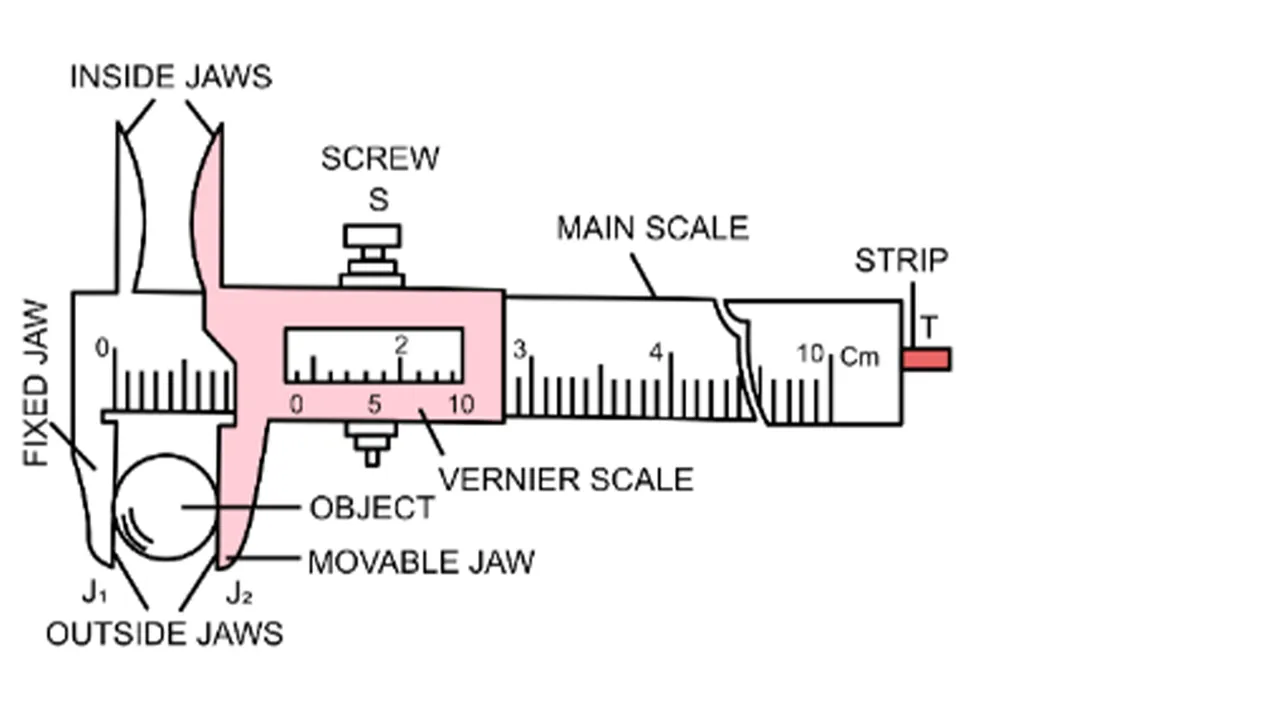Measurement plays a fundamental role in understanding the world around us, and when it comes to length, accurate measurement is essential for numerous applications. Various instruments are used to accurately measure lengths, . This article explores some of these instruments, their functionality, applications, and potential errors.
Length is defined as the extent of space or distance covered by an object. length can be measured using any of the following instruments
- Meter rule
- Tape rule
- Micro-meter screw gauge
- Caliper
The main job of the meter rule is to measure how long things are. It's used for many tasks. We can use it to find out how big an object is, measure the space between two points, or figure out how much space an area takes up. The meter rule is really useful because it works well in many different situations.. The two errors commonly associated with the use of a meter rule are the 'zero error' and the 'parallax error'
a.Zero error:

The zero mark is the starting point for all measurements on a ruler (the zero mark is the original position of the zero point). When you have zero error, the true zero point of the ruler is not the same as the zero mark. For example, let's say the true zero point of a ruler is at 0.5 mm. But the zero mark is at 1 mm. This means the zero mark is 0.5 mm away from the true zero point. The zero error is 0.5 mm. Using the zero mark would lead to inaccurate measurements
b.Parallex error

source
Parallax error refers to an error that occurs when an observation is made from an angle rather than a direct, perpendicular viewpoint. Parallax error occurs when you see a mark on the meter rule differently because you're not looking directly above it. It's like an optical illusion caused by the angle of your sight.


The micro-meter screw gauge is a measuring instrument used to measure the diameter of a thin piece wire. It is used in many different areas and fields, in fields such as mechanical engineering, manufacturing, calibration labs, automotive and aerospace industries, medical applications, research, jewelry, and quality control. It's also valuable in educational settings and optics manufacturing. Its ability to measure small components with high accuracy makes it essential for ensuring quality, precision, and consistency in various industries and applications. It is used to measure the diameter of very small round objects, it can also be used to measure the thickness of paper.
1.First of all check if there is any zero error by tightening the spidle and anvil
2.Unscrew the instrument and put in the object to be measured in between the spirdle and anvil
by rotating the ratchet untill the object is firmly gripped.
3.Record the reading on the main scale and record the reading on the venier scale
4.Multiply whatever you get in the venier scale by 0.01mm
5.Add the both readings (i,e the main scale reading and venier scale reading) that gives you the total length of object.

A calliper also called venier caliper is an instrument used to measure the length of an object more accurately than a meter rule. it is uses to measure the diameter of a tube, it can also be used to measure thee diameter of a rod. This instrument has two scales just like the micro-meter screw gauge (the main scales and thee venier scales), it also has two jaws ( the inner jaw an d outter jaw)
1.Take the reading on the main scale that meets with the zero mark on the venier caliper
2.Take the reading on the venier scale that meets any mark on the main scale
3.Convert the reading obtained from the main scale (always in centimeter) to millimeter
4.Finally add the both readings (i.e the main scale reading and the venier scale reading) to get the actual length of the object.
The tape rule is special because it can measure both short and long distances. It's useful for tailoring and building things. The micro-meter screw gauge is tiny but super important. It helps measure really small things well, from engineering to medical work.
Lastly, the venier caliper is another tool we talked about. It's good at measuring because it has two scales and adjustable parts. Knowing how these tools work and where they can make mistakes helps us measure lengths accurately in different situations.

